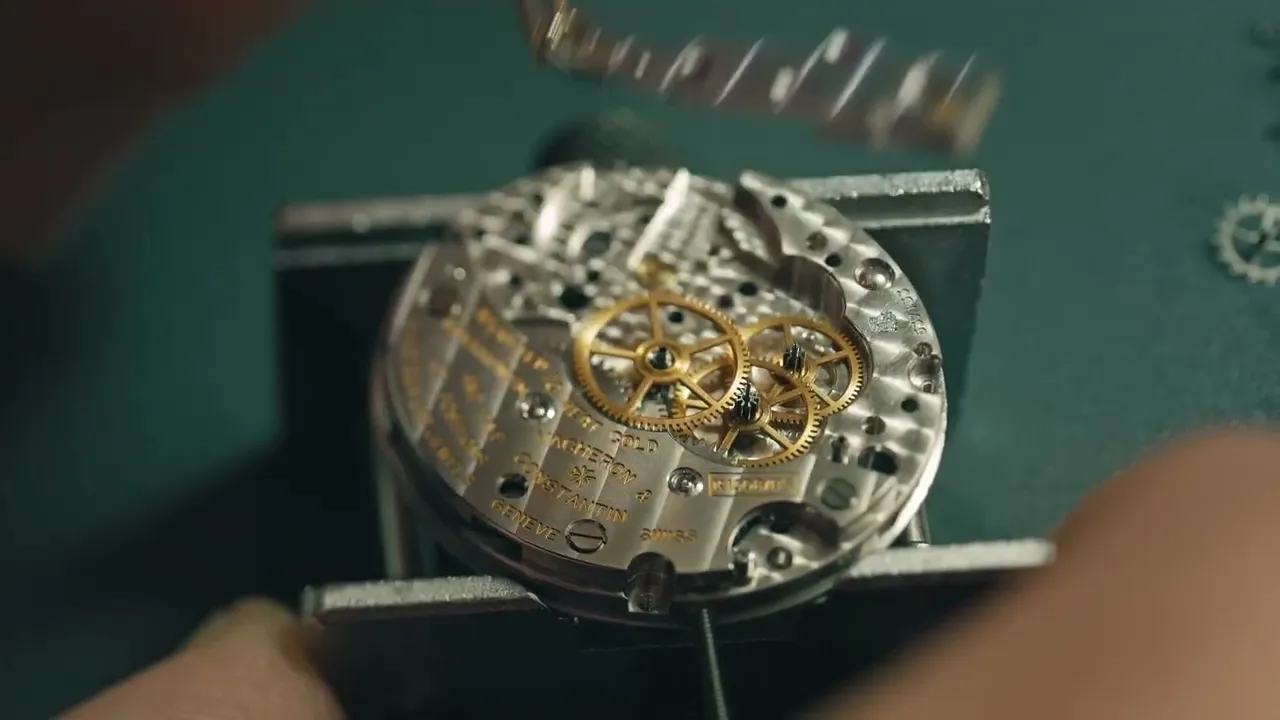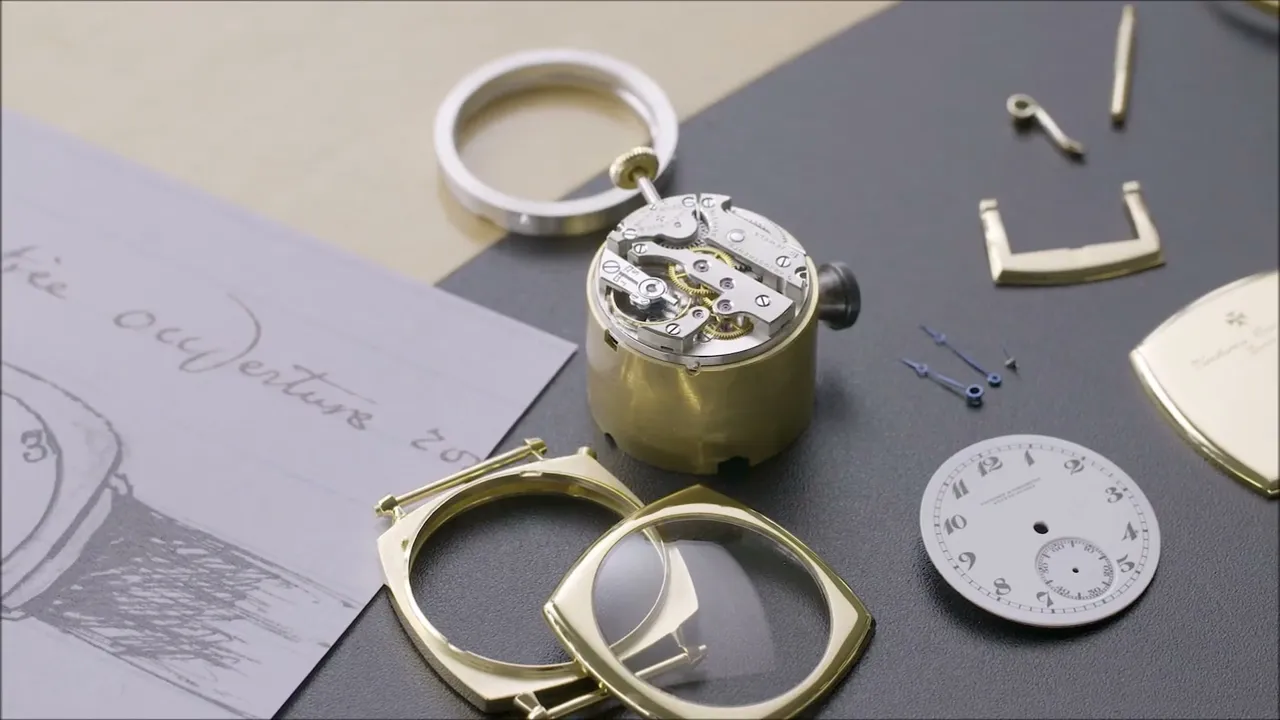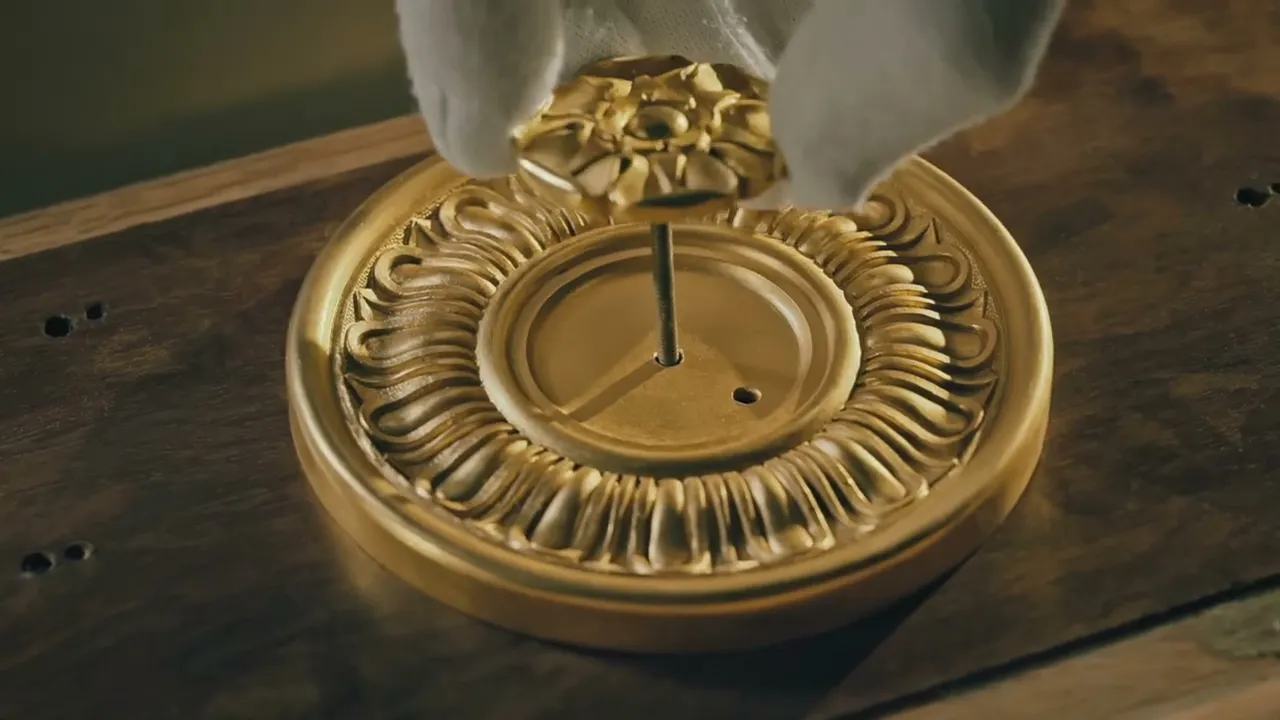Homo Faber is an international exhibition and cultural initiative focused on showcasing the finest craftsmanship and artisanal mastery from around the world. It celebrates the expertise of skilled artisans, especially within Europe, by presenting their works and techniques across various disciplines, such as fine watchmaking, ceramics, jewelry, textiles, and more. Organized by the Michelangelo Foundation for Creativity and Craftsmanship, the Homo Faber event aims to highlight the intersection of traditional craftsmanship with modern innovation.

The first Homo Faber event took place in Venice, Italy, in 2018, set within the beautiful Fondazione Giorgio Cini on the island of San Giorgio Maggiore. The event featured exhibitions, workshops, and demonstrations, providing attendees with an opportunity to engage directly with master artisans, learn about their techniques, and gain insight into the dedication and artistry behind their creations.

Key goals of Homo Faber include:
- Promoting and preserving traditional crafts: By showcasing the work of master artisans, Homo Faber helps preserve ancient techniques and skills, ensuring they are passed on to future generations.
- Bridging tradition and innovation: The event emphasizes how traditional craftsmanship can be integrated with modern design and technologies.
- Cultural exchange: Homo Faber brings together artisans, designers, and the public, fostering cross-cultural dialogue and appreciation for handmade objects.

Homo Faber has gained a reputation for elevating the status of artisans and their work, offering a platform where craftsmanship is celebrated as both an art form and an essential part of cultural heritage.

Jaeger-LeCoultre – celebrating craftsmanship
Jaeger-LeCoultre is pleased to announce its participation in the third edition of the Homo Faber Biennial in Venice in September. Homo Faber celebrates the savoir-faire and unique stories of talented craftspeople from around the globe, honouring the priceless human skill behind the creation of beautiful, handcrafted objects. Imagined by celebrated film director and interior architect Luca Guadagnino, and architect Nicolò Rosmarini, the celebration, titled The Journey of Life, will feature the work of more than 400 highly skilled craftspeople from 50 countries, in 10 themed exhibition spaces. The Homo Faber 2024 will take place at the Fondazione Giorgio Cini on the island of S.Giorgio Maggiore, Venice, from 1–30 September, 2024.

An immersive exhibition offering rare insight into precious craft skills
Showcasing the exceptional savoir-faire of its Métiers Rares™ atelier and reflecting a core value of the Maison, Jaeger-LeCoultre has been chosen as a participant in the ‘Nature’ exhibition. The Maison will underline the inheritance of traditional crafts, the value of passing down savoir-faire from generation to generation, and the influence of symbolic imagery throughout history.

Animating the Maison’s exhibit and offering visitors rare insight into precious craft skills, craftsmen from the Manufacture will give live demonstrations of the crafts of enamelling, engraving, gem setting and watchmaking at different times throughout the month-long event.

To celebrate the talent and accumulated savoir-faire in both watchmaking and the decorative arts, Jaeger-LeCoultre will launch three new Reverso limited-edition timepieces during the Homo Faber Biennial.

Homo Faber Fellowship: supporting the transmission of savoir-faire
Reinforcing its commitment to supporting the preservation and transmission of vitally important craft skills for future generations, Jaeger-LeCoultre last year became the partner of the Michelangelo Foundation in the Homo Faber Fellowship. A long-term initiative, the programme equips talented graduates with the creative and business skills necessary for integration into the professional craft sector. The inaugural cycle began with a month-long residential masterclass based at the studio of the renowned Portuguese contemporary artist Joana Vasconcelos and brought together 20 duos of Master craftsmen and newly graduated talents (Fellows). Workshops in creative skills were complemented by a design case study presented by Jaeger-LeCoultre, and a bespoke programme focused on business skills and entrepreneurial vision presented and certified by ESSEC Business School. This was followed by a six-month residential placement for the Fellows in the studios of their corresponding Masters, during which they exchanged ideas and further developed their techniques through the co-creation of an object.

A selection of these objects has been curated for the Homo Faber 2024, where they will be displayed in different exhibition areas, corresponding to the creative visions and craft skills that each embodies. The objects made by the duos of master artisans and fellows that have been selected are:

- “Eclipse” by Julien Vermeulen and Matéo Laurent (France) from Ecole Nationale Supérieure des Arts Décoratifs, craft of Featherworking
- “Art Deco Totem” by Giannis Zois (Greece) and Shokhrukh Rakhimov (Uzbekistan) from Kamoliddin Behzod Institute, craft of Ceramics
- “Coire” by Mike Byrne and Noel Donnellan (Ireland) from Van der Kelen Logelain, craft of Ceramics
- “Silver Tea Service” by Seamus Gill and Claire Mooney (Ireland) from Ulster University, craft of Silversmithing
- “Un Au Revoir” by Tom von Kaenel (Switzerland) and Clara Coujaty (France and Greece) from Ecole Boulle, craft of Stone Sculpture
- “Decocode” by Andreia Almeida and Manuel Pinto (Portugal) from FRESS, craft of Woodcarving
- “Silla Toledo” by Ramón Recuero Ibáñez and David González Parrilla (Spain), from Escuela de Herreros Ramón Recuero, craft of Metalworking

Vacheron Constantin – Honouring the art of restoration
For this event celebrating craftsmanship, Vacheron Constantin has chosen to celebrate the art of restoration by inviting the Louvre Museum’s cabinet-making workshop. This will provide an opportunity to showcase the work and techniques of Vacheron Constantin’s artisans alongside those of the Louvre.

The art of restoration at Vacheron Constantin
Restoration is an art for which Vacheron Constantin has the deepest respect. Dedicated to creating watches made to last through the centuries, the Maison is committed to maintaining all the watches it has produced since its origins in 1755. Whatever the type of intervention, from a simple one-off overhaul to major repairs involving restoring components to their original condition, the Manufacture’s watchmakers have a direct impact on watches’ longevity. As a guarantor of the enduring existence of its watches, even the oldest ones, the Manufacture makes a point of ensuring that restored models retain their original characteristics. To this end, it has a large stock of original components. Should they run out, the watchmakers in its restoration workshops will be able to produce them on vintage machines, according to the historical technical data – plans, diagrams and instructions for use – preserved in the Heritage archives that list every single one of Vacheron Constantin’s creations.

Vacheron Constantin and the Louvre: an artistic and cultural partnership
This science of restoration, passed on from generation to generation for almost three centuries in the Vacheron Constantin workshops, will be highlighted at the forthcoming Homo Faber exhibition, a not-to-be-missed event for contemporary arts and crafts. During the next edition, which takes place at the Giorgio Cini Foundation on the island of San Giorgio Maggiore in Venice, Vacheron Constantin will once again be taking part alongside the art workshops of the Louvre, which has been partnering with the Maison since 2019.

The art workshops at the Louvre Museum ensure that works of art are presented and conserved in the best possible conditions. Each workshop has its own specificities, touches and techniques, some of which have been handed down since the 19th century.

Artisans at work on site
The restorers from the cabinetmaking workshop at the Louvre Museum are presenting the work they carried out on a mahogany-veneered oak display case with gilded bronze appliqué decoration dating from 1822 and crafted by the famous cabinetmaker Jacob-Desmalter. This creation, along with three other identical display cases, was used to exhibit gems from the royal collections and objects belonging to Marie-Antoinette in the Jewellery Room at the Louvre.

Alongside them, Vacheron Constantin’s watchmakers present the work involved in restoring antique watches. The booth and its display cases feature a number of timepieces from Vacheron Constantin’s private collection, including a 1985 Lady Kalla jewellery watch, a 1908 pocket watch and three historic American 1921 watches, including the one-off model reproduced in 2021 using period tools and watchmaking techniques. This highly complex project is a perfect illustration of the Maison’s commitment to its heritage and to passing on its expertise.
Discover more about the American 1921 Pièce unique
Homo Faber 2024: The Journey of Life is the third edition of Homo Faber Biennial, a celebration of contemporary craftsmanship in Venice curated by the Michelangelo Foundation for Creativity and Craftsmanship, a non-profit institution based in Switzerland, which champions craftspeople with the aim of promoting a more human, inclusive and sustainable future.
Vacheron Constantin heritage timepieces on display at Homo Faber


Pendant watch – 1908
Before securing their watches to their wrists, women preferred to wear them as pendants, as exemplified by this dainty jewellery piece from 1908. The subtly guilloché caseback is adorned with a translucent aqua green translucent enamel applied using the flinqué technique, inlaid with fine lace-like platinum appliques set with rose-cut diamonds. Topped by a yellow gold bow, this composition is decorated in keeping with the period’s Art Nouveau aesthetic that favoured naturalist-inspired compositions. The silver-toned dial also features a delicate central setting with black Arabic numerals and railway minutes track.

Lady Kalla – 1985
The Lady Kalla has been a reference among jewellery watches since its creation in 1980. Carved from a block of 18K yellow gold, it is set with more than 120 emerald-cut white diamonds selected with meticulous patience, as their purity, hue and proportions require patient research. Its dial is also paved with 15 emerald-cut diamonds. Combining High Watchmaking and High Jewellery, Lady Kalla features a baguette-type hand-wound 17-jewel mechanical movement beating at 19,800 vibrations per hour. Like all Vacheron Constantin movements, it is adorned with a Côtes de Genève pattern. The crown is positioned under the movement so as to enable the gems’ full brilliance to shine through unhindered.

American 1921 – 1919
The origins of Vacheron Constantin’s American 1921 go back to this model made in 1919. Vacheron Constantin was experimenting with different case shapes at the time, always in very limited numbers. The wristwatch had become a genre in its own right and was steadily gaining popularity. Several examples of this model were produced in 1919 with small seconds on a round enamelled dial featuring 11 luminescent Arabic numerals surrounded by a railway minutes track swept over by cathedral hands. The American 1921 model is distinguished first and foremost by its design, with a look defined by its elegantly understated cushion-shaped case. It also stands out for the way it shows the passing of time, with its calibre unexpectedly offset by means of a 45-degree counter-clockwise rotation and enabling diagonal readings. The crown is positioned between 1 and 2 o’clock in the top right-hand corner of the case. The watch is as intriguing as it is seductive.

American 1921 – 1921
In 1921, Vacheron Constantin presented a new small series of its aptly named American 1921 watch for the eponymous market. Behind the unusual design of the timepiece created in the 1920s lies the quintessence of the Roaring Twenties, which for almost a decade sent a wind of renewal blowing across the United States and Europe. Synonymous with artistic and cultural effervescence, it was an era conducive to boldness and to shaking up convention. In Vacheron Constantin’s workshops, the tremendous inventive momentum of these years also gave rise to new perspectives. At a time wristwatches were beginning to take over from pocket watches, advances in watch movement miniaturisation gave free rein to a burst of creativity. This provided scope for all manner of fanciful touches, as demonstrated by this 1921 timepiece embodying a skilful blend of understatement and irreverence, classic elegance and a unique twist.
American 1921 Pièce unique – 2021
Vacheron Constantin celebrated the 100th anniversary of the American 1921 by recreating this emblematic model from scratch. From the 11-ligne Calibre Nouveau to the gold case along with the decorations and exterior components, the American 1921 Pièce unique watch reproduces the original properties of its ancestor created a century ago. This highly complex and unprecedented process involved the most experienced watchmakers in the Restoration workshop and the Vacheron Constantin Heritage team, who spent a year reviving old tools and forgotten know-how in the course of a passionately exciting human and technical adventure.
Louvre object on display at Homo Faber
Jacob-Desmalter display case – 1822
This mahogany-veneered oak display case with applied gilt bronze decorations belongs to a set of four identical showcases made in 1822 by famous cabinetmaker Jacob-Desmalter to exhibit gems from the royal collections and Marie-Antoinette’s collectibles in the Jewellery Room at the Louvre. The skills of the Museum’s current cabinetmakers – who carried out the complete restoration (wood grafting, varnishing using dedicated pads, gilding bronze surfaces, etc.) – will enable these creations to be presented again in autumn-winter 2024 in their original room from which they had been displaced during successive refurbishments of the palace.

Panerai, along with the artistic duo thebackstudio Illuminates Homo Faber 2024 with an Enlightening Installation Celebrating Italian Creativity
Panerai is proud to be part of the celebrated Homo Faber 2024, along with the artistic duo thebackstudio that this year explores the theme, ‘The Journey of Life’. The exhibition takes place at the iconic Fondazione Giorgio Cini on San Giorgio Maggiore Island, Venice, and this year’s edition is curated by Luca Guadagnino and architect Nicolò Rosmarini, taking visitors on a thematic journey through human life, from birth to afterlife.

“We are honored to be part of this culturally rich event once again. At this year’s Homo Faber, the theme ‘The Journey of Life’ mirrors our own reflections on time. The sitespecific installation developed by the talented artistic duo thebackstudio showcases our dedication to the art of watchmaking and our ongoing pursuit of innovation, where luminescence comes through in the spirit of hand-made Italian creativity,” says CEO of Panerai, Jean-Marc Pontroué.

Panerai, renowned for its innovative approach in watchmaking, will present a conceptual light installation in the Sala degli Arazzi, a room that symbolizes union and love within the journey of life. The installation designed by the artistic duo thebackstudio, known for their contemporary approach to light art and design selected by MATTA gallery, demonstrates Panerai’s commitment to integrating time-honored techniques with modern innovations. Thebackstudio perpetuates a visual language that escapes conventional artistic categorizations, positioning itself in a grey area between sculpture, art, and design. The installation’s modular design echoes the intricate mechanics of Panerai’s watchmaking heritage, highlighting the Maison’s illustrious history in the invention of reliable instruments of luminescence. The creative partnership harnesses the duo’s expertise in neon lighting and contemporary art, while the structure is reminiscent of the modular architecture of watch mechanics.

Set against the backdrop of the ancient monastery, it offers a visually compelling contrast where Italy’s historical architecture meets Panerai’s innovative pursuit of luminescent technology—a trait that has become a signature of their identity. Here, Panerai reaffirms its role in the ongoing narrative of life’s milestones where illumination plays a pivotal role, showcased by the finest artisans in the world.

This year’s Homo Faber is an immersive experience that showcases the craftsmanship behind objects that mark life’s most precious moments. With exceptional scenography, bespoke handmade creations, and live demonstrations, the event promises to be a sensory experience, with Panerai at the forefront of this narrative thanks to the original perspective of thebackstudio. The event will run from September 1 to 30, 2024.































































































































